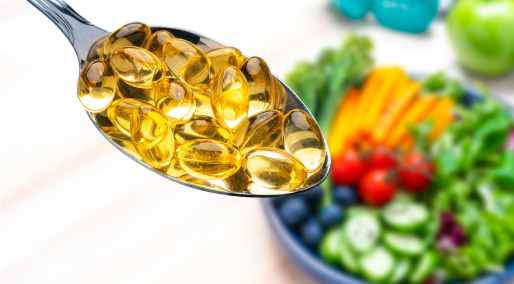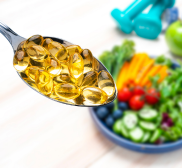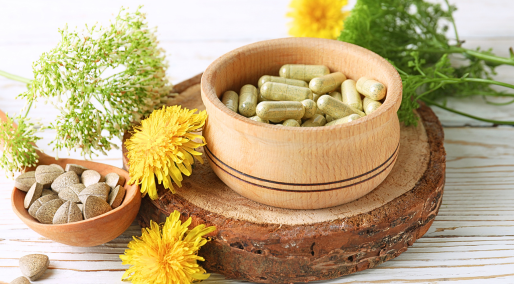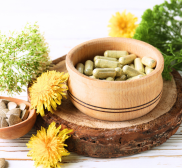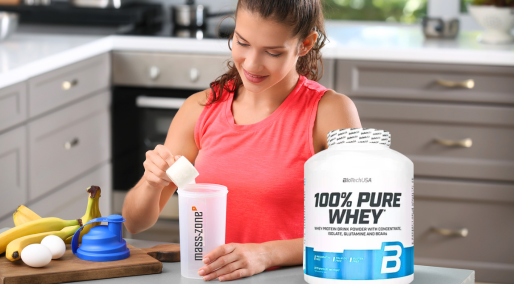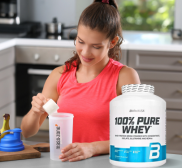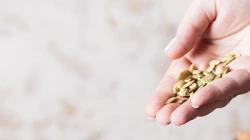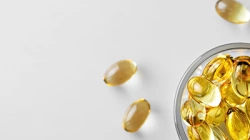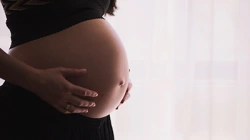.webp)
.webp)

Patryk Chodyniecki
Diet after a heart attack. What to eat to help your heart?
- DIET AFTER ATTACK. WHAT TO EAT TO HELP YOUR HEART?
- MYOCARDIAL INFARCTION — SYMPTOMS AND RISK FACTORS
- WHAT SHOULD A PROPER DIET LOOK LIKE AFTER A BLACK?
- WHY IS A CORRECT POST-FALL DIET SO IMPORTANT?
- WHAT SHOULD BE DISTINGUISHED IN A GOOD DIET AFTER A BLAST?
- CARDIOLOGY DIET AFTER INFARCTION — MOST IMPORTANT RULES
- DIET AFTER ATTACK — RECOMMENDED PRODUCTS
- DIET AFTER ATTACK — NOT RECOMMENDED PRODUCTS
- MEAL AFTER A BLAST - EXAMPLE
- Take advantage of the discount
DIET AFTER ATTACK. WHAT TO EAT TO HELP YOUR HEART?
Myocardial infarction is actually myocardial necrosis, which occurs as a result of ischemia. The most common cause of a heart attack is the occlusion of an artery in the course of coronary atherosclerosis, which occurs through the development of the so-called atherosclerotic plaque. According to statistics, heart attacks are responsible for every fifth death in Europe. People with this condition are at a higher risk of recurrent cardiovascular events. This is a good time to change your current lifestyle, including nutrition. What should a proper diet after a heart attack and a general heart diet look like?
MYOCARDIAL INFARCTION — SYMPTOMS AND RISK FACTORS
When a myocardial infarction occurs, characteristic symptoms appear that should immediately prompt you to call for medical help.
The main symptoms of a heart attack include:
- severe, pressing pain of an anginal nature that is felt behind the breastbone, – this pain appears suddenly and may last for many hours, and may also radiate to the left arm.
- these symptoms do not improve after administration of nitroglycerin,
- lowering blood pressure below 100 mmHg,
- vomiting,
- anxiety.
Heart attacks are now occurring in younger and younger people, although this event mainly affects the elderly. This ailment is largely determined by the condition of the body and, indirectly, by lifestyle. That's why it's worth remembering that heart attacks can be prevented by taking care of your health.
The risk of myocardial infarction increases:
- arterial hypertension,
- overweight and obesity,
- smoking,
- drinking alcohol,
- stress
- low physical activity,
- improper diet.
Overweight and obesity are one of the important factors increasing the risk of subsequent heart attacks. For people with a BMI over 25 kg/m2, it is recommended to go on a diet to lose weight.
The most dangerous thing is the so-called Abdominal obesity, which is diagnosed on the basis of a significant amount of fat tissue deposited around the abdomen and waist. In the case of women, the waist circumference is above 80 cm, while in men it is 94 cm.
It is worth noting that drastic weight loss diets are not recommended after a heart attack. Losing excess weight too quickly may be dangerous to your health. Slow body weight reduction is recommended, approximately 0.5-1 kg per week. It is best for the diet to be carried out under the supervision of a dietitian.
WHAT SHOULD A PROPER DIET LOOK LIKE AFTER A BLACK?
People who have had a myocardial infarction should be aware that proper nutrition is very important in their case. Therefore, it is worth thinking about changing your current eating habits. What to eat to relieve the heart?
The diet after a heart attack should first be adjusted to the stage of treatment and convalescence:
- Shortly after a heart attack, nausea and vomiting may occur, so it is recommended to follow a sparing liquid diet. It does not constitute an excessive burden on the digestive system, and at the same time ensures proper hydration of the body, which is also important for the functioning of the heart.
- When the patient's condition gradually improves, it is recommended to switch to an easily digestible diet that contains key nutrients.
- Finally, when the patient leaves the hospital, he or she can switch to a cardiac diet, i.e. a diet designed to support the heart.
A cardiological diet after a heart attack should be designed so as not to weaken, but also not to overload the heart and circulatory system. It should be adapted to the patient's well-being, physical activity, other ailments, intolerances and taste.
For people with less activity, a diet of 20 kcal per 1 kg of body is recommended, while for fit people who practice sports it may reach up to 30 kcal per 1 kg of body weight. 1 kg of body. However, people who are overweight and obese should eat meals with reduced energy value. In this case, the best diet can be recommended by a doctor or dietitian.
WHY IS A CORRECT POST-FALL DIET SO IMPORTANT?
Many people return to their old eating habits after a heart attack. This is a serious mistake that can lead to another cardiovascular event.
The main goal of a proper cardiac diet, as mentioned earlier, is to support the heart.
Properly balanced meals have two goals in this case:
- Normalizing the lipid profile, i.e. reducing the level of cholesterol, including its LDL fraction, i.e. "bad" cholesterol. cholesterol, HLD, i.e. "good" cholesterol cholesterol and triglycerides (triglycerides).
- Reduction and removal of atherosclerotic lesions (atherosclerotic plaque) in the vessels responsible for blood supply to the heart.
In the long term, a diet for people after a heart attack can improve the condition of the cardiovascular system and reduce the risk of another heart attack. It also supports the functioning of the entire body and helps in losing excess weight.
WHAT SHOULD BE DISTINGUISHED IN A GOOD DIET AFTER A BLAST?
A good cardiac diet should be tailored to people after a heart attack or other diseases of the circulatory system. This is why it is recommended to seek help from a dietitian. When creating a diet, the specialist takes into account the patient's condition, but also his other ailments, for example diabetes, hypertension, current body weight, activity, food intolerances.
Regardless of the patient, the diet after a heart attack should be based on healthy ingredients, which include:
- antioxidants — protect the heart and blood vessels,
- dietary fiber — helps remove cholesterol deposits from the arteries,
- stanols and sterols — reduce the level of cholesterol in the blood,
- potassium and magnesium — they normalize blood pressure and stabilize heart function.
CARDIOLOGY DIET AFTER INFARCTION — MOST IMPORTANT RULES:
- Most of your diet should consist of vegetables – it is worth especially taking care of the abundance of green vegetables during meals.
- It is worth eating at least one fruit every day — preferably seasonal.
- Eat legumes, such as beans, peas, chickpeas, soybeans or lentils, several times a week — legume seeds can be an addition to soup, a second course, they can be added to salads, salads, or prepared into pastes.
- Instead of white bread and pasta, it is worth choosing whole grain products — whole grain dark bread, whole grain pasta, oatmeal and other cereal flakes, coarse grain groats such as buckwheat, barley, brown rice.
- Dairy products in the diet should be low-fat – your diet should include skim milk, buttermilk, kefir, low-fat cottage cheese, and natural yogurt. Instead of cream, you can choose kefir or yogurt.
- You can eat animal products several times a week — fatty sea fish rich in Omega-3 and Omega-6 acids, lean meats such as chicken, turkey, veal, lean meats.
- You should give up animal fats and choose vegetable fats instead. rapeseed oil, linseed oil, olive oil.
- It is better to use margarine instead of butter for spreading bread – it is worth choosing margarines dedicated to people with heart and blood vessel problems, which contain healthy plant sterols.
- Salt restriction — instead, you can use herbal salt, various herbs.
- Avoiding excess sweets, salty snacks – instead, it is worth choosing fruit, unsalted nuts, healthy cakes.
- Drink plenty of water – preferably about 2 liters of drinks a day
List of products indicated and not recommended after a heart attack. After a heart attack it is worth making changes to your shopping list. What is worth buying? What should you not do after a heart attack?
DIET AFTER ATTACK — RECOMMENDED PRODUCTS:
- vegetables and fruits,
- whole grain products – bread, pasta, cereals, brown rice, coarse grain groats,
- pods — beans, lentils, peas, soybeans, chickpeas,
- lean dairy – milk, cottage cheese, yogurts, buttermilk, kefir,
- lean meat – turkey, chicken, rabbit, veal, lean meats,
- oily sea fish,
- vegetable oils – linseed, rapeseed, olive,
- nuts – especially walnuts and almonds,
- small amounts of sweets – dark chocolate.
DIET AFTER ATTACK — NOT RECOMMENDED PRODUCTS:
- white wheat flour products – bread, noodles, pasta,
- fatty meat products – pork, beef, cold cuts, sausages,
- fat dairy – cream, cheese, including fruit yogurts, desserts made with fatty milk, e.g. creams or ice cream,
- selected animal and vegetable fats – butter, lard, lard, palm oil and other hydrogenated fats,
- ready-made sweets – cookies, bars and more
- salty snacks – chips, breadsticks,
- broth cubes,
- large amounts of salt.
It is also worth noting that after a myocardial infarction you should reduce alcohol drinking, or preferably give it up completely. The only alcohol allowed is dry red wine. It contains resveratrol, which supports the functioning of the heart. The allowed amount is a glass (100 ml) with dinner.
Alcohol is not recommended for people after heart attacks because it contains a lot of calories, increases blood pressure, and causes stress on the liver. Drinking alcoholic beverages can increase cholesterol levels, which leads to the development of atherosclerotic plaque and, therefore, a greater risk of a heart attack.
MEAL AFTER A BLAST - EXAMPLE
Breakfast: Greek salad.
Mix different types of lettuce or ready-made mix, cherry tomatoes cut in half, chopped cucumber, onion and pepper, and olives. Add 2-3 tablespoons of feta cheese. Sprinkle everything with Mediterranean herbs – oregano, basil and drizzle with olive oil. Eat with graham crackers.
Second breakfast: herbal cottage cheese.
Mix low-fat cottage cheese with a small amount of natural yogurt. Add herbs, for example parsley, chives, basil, mint, and sprinkle with pepper. Eat with whole grain bread.
Lunch: stewed vegetables in tomato sauce.
In a pot, fry in a small amount of fat and then stew the chopped vegetables – onion, garlic, zucchini, peppers, carrots, zucchini, mushrooms. Pour tomato puree or canned tomatoes dissolved in water. Add spices, such as Mediterranean herbs. Serve with groats or whole grain pasta.
Afternoon snack: natural yogurt.
Dinner: avocado salad.
Place lettuce in a bowl, add sliced avocado, orange segments and lean ham. Sprinkle with crushed walnuts and drizzle with a small amount of rapeseed oil.
Let us remember, however, that the diet for people after a heart attack or those struggling with a lot of cardiovascular diseases should be supported by the recommendations of a doctor and a dietitian.
Take advantage of the discount:
Piotr Gajewski. Universal definition of heart attack. "Practical Medicine". 1 (203) January, pp. 47-64, 2008
Heart and vascular diseases2012, volume 9, no. 4, 208-213, Aleksander Prejbisz, Andrzej Januszewicz
J. Mark Peterman et al.,Door-to-Balloon Time,Journal of the American College of Cardiology, 56 (2), pp. 158–159,
Rate the text

Patryk Chodyniecki








.png)
